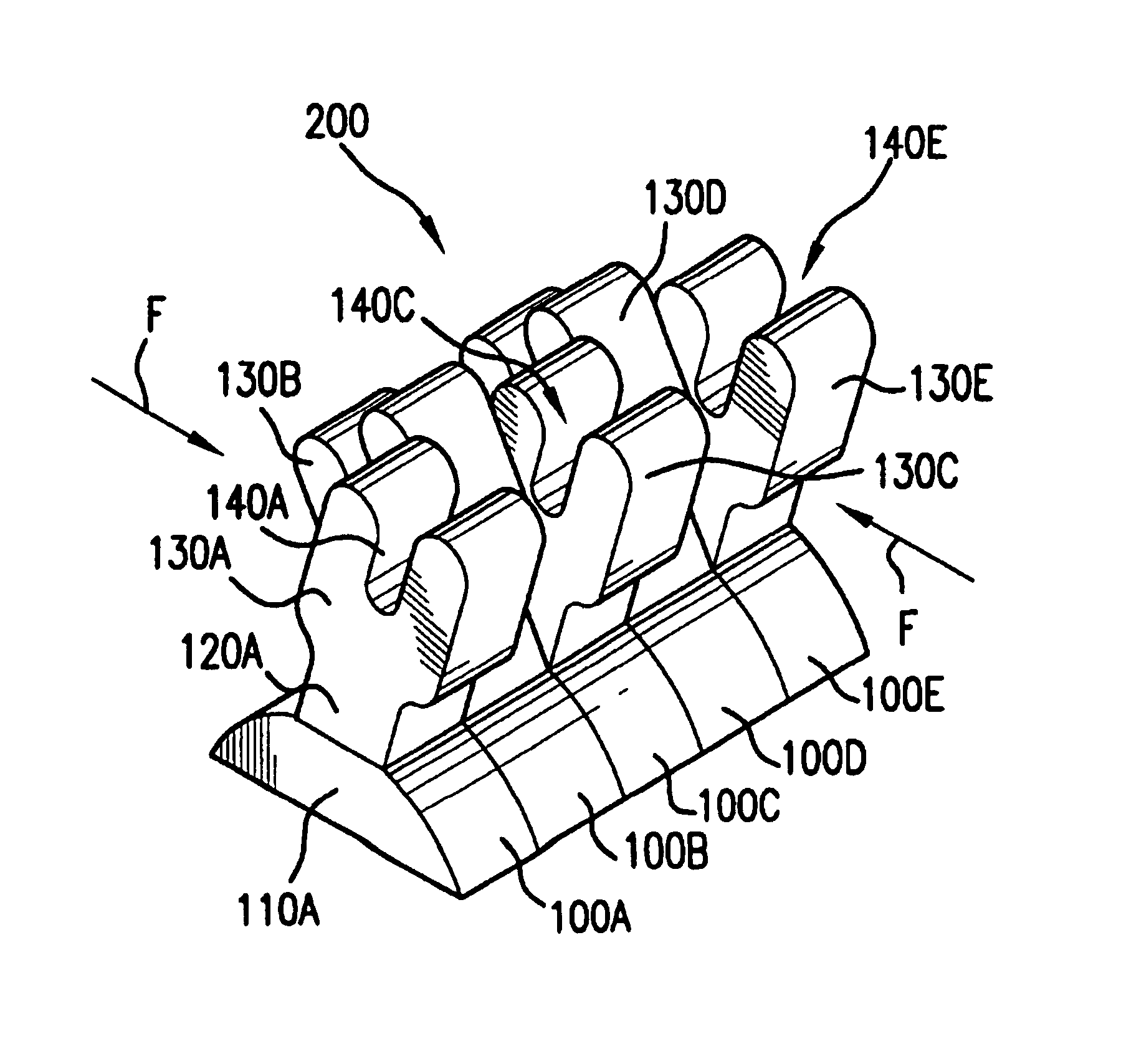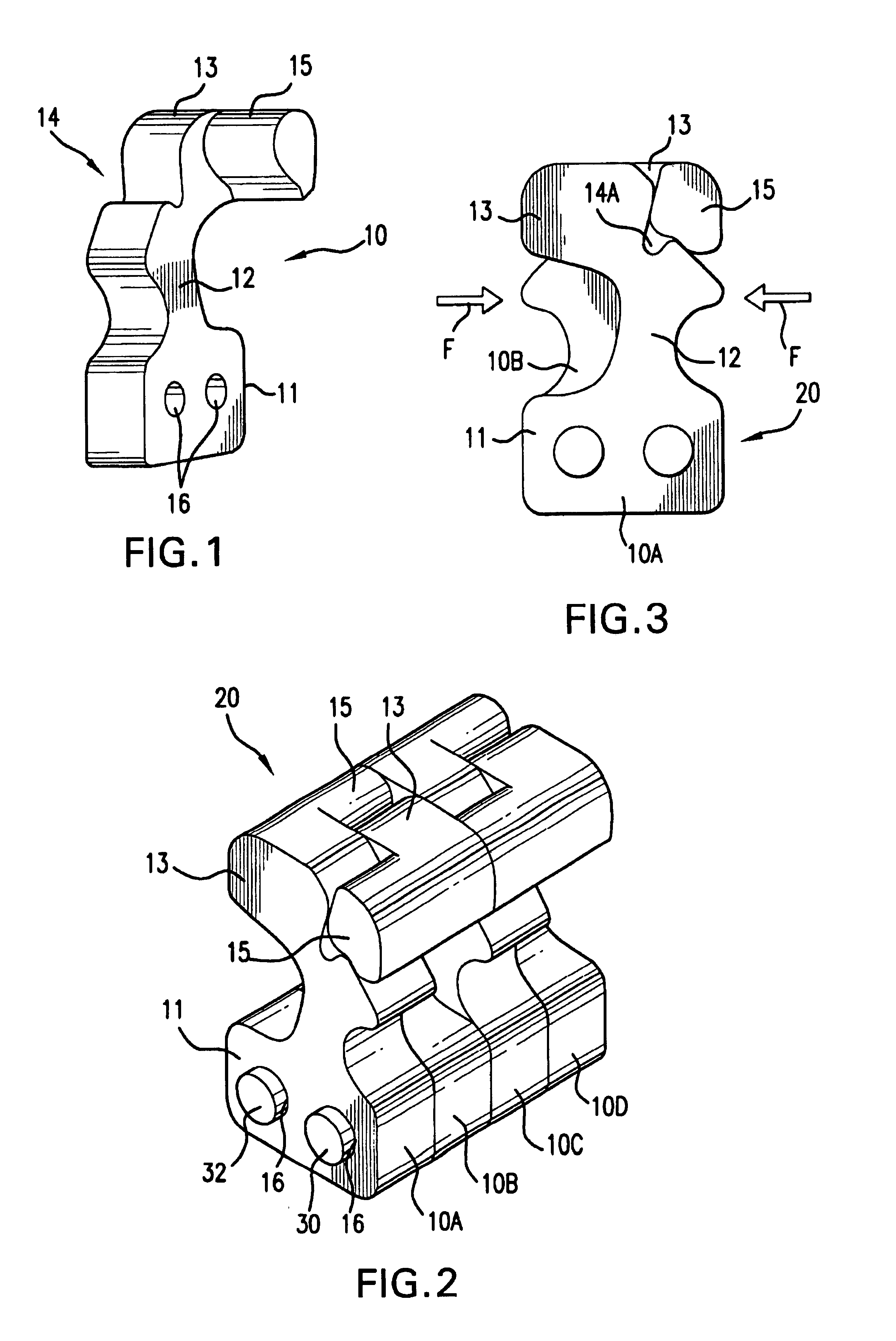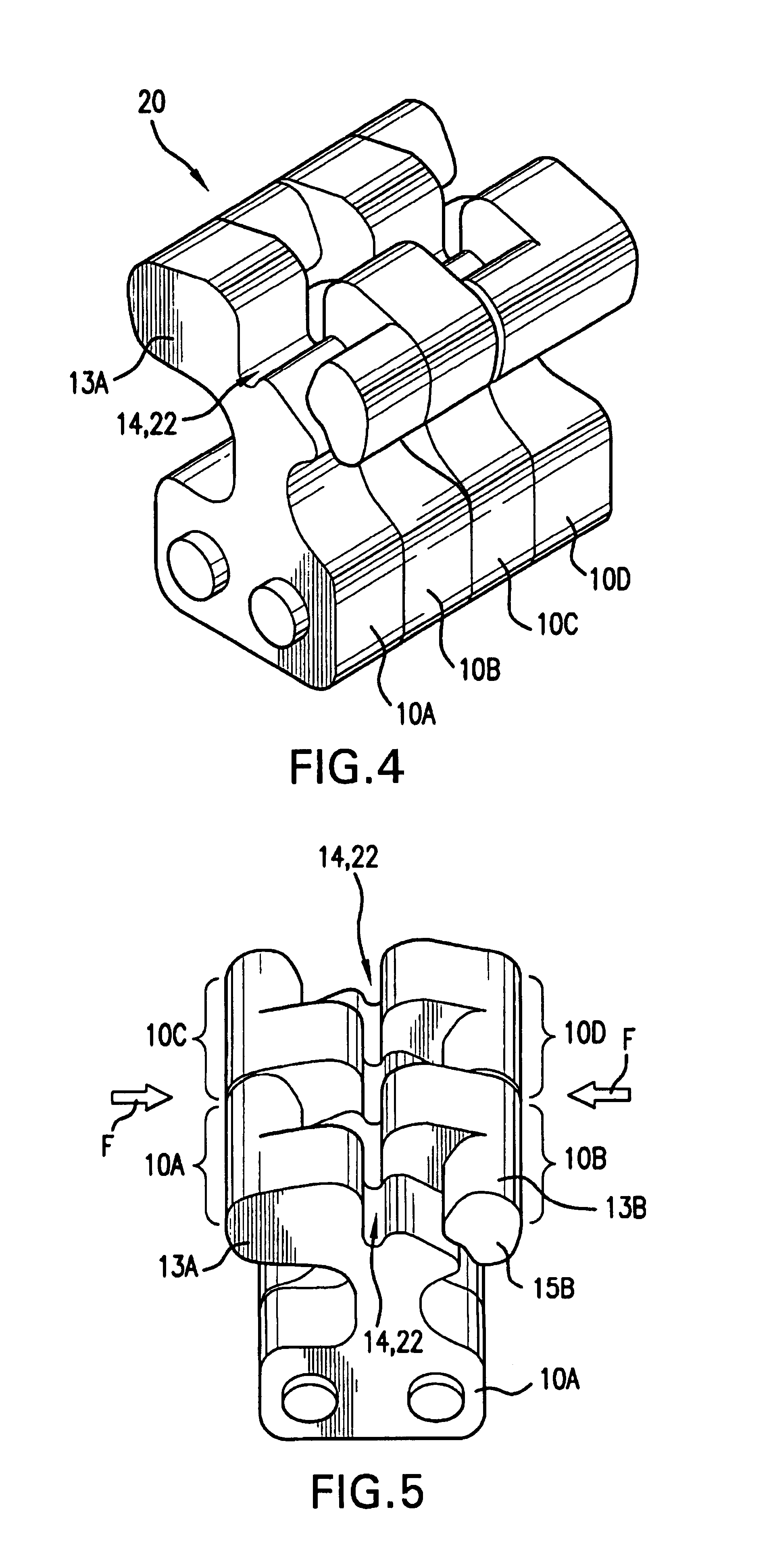Multi-element biased suture clip
a suture clip and multi-element technology, applied in the direction of suture equipment, snap fasteners, buckles, etc., can solve the problems of increasing so as to achieve the effect of minimizing or eliminating the difficulty of knot tying
- Summary
- Abstract
- Description
- Claims
- Application Information
AI Technical Summary
Benefits of technology
Problems solved by technology
Method used
Image
Examples
Embodiment Construction
[0034]In accordance with the present invention, a suture clamping system is provided. In preferred aspects, the suture clamping system comprises a plurality of individual flexible elements positioned together in a row. In various preferred embodiments, the individual flexible elements are shaped the same. Optionally, the row of elements is formed by positioning successive identically shaped elements adjacent to one another. It is to be understood, however, that the individual elements in the row need not be identical in shape to one another. It is also to be understood that the individual elements need not be positioned in direct “touching” contact side-by-side with one another, but may instead be positioned some distance apart from one another. As will also be explained, various embodiments of the invention may include rows of elements including both flexible and non-flexible elements. In fact, in one embodiment, only one flexible element is required.
[0035]One or more of these elem...
PUM
 Login to View More
Login to View More Abstract
Description
Claims
Application Information
 Login to View More
Login to View More - R&D
- Intellectual Property
- Life Sciences
- Materials
- Tech Scout
- Unparalleled Data Quality
- Higher Quality Content
- 60% Fewer Hallucinations
Browse by: Latest US Patents, China's latest patents, Technical Efficacy Thesaurus, Application Domain, Technology Topic, Popular Technical Reports.
© 2025 PatSnap. All rights reserved.Legal|Privacy policy|Modern Slavery Act Transparency Statement|Sitemap|About US| Contact US: help@patsnap.com



